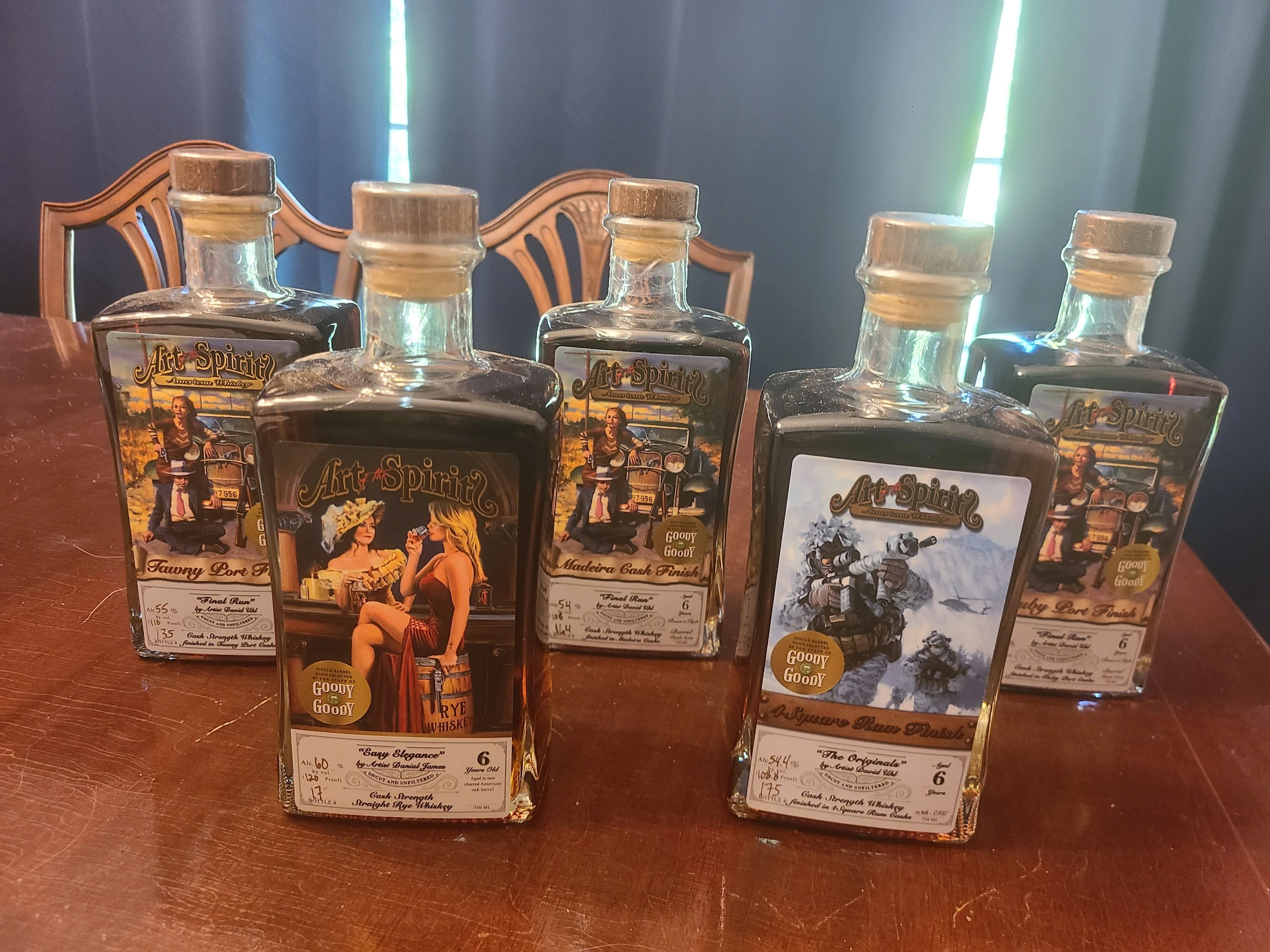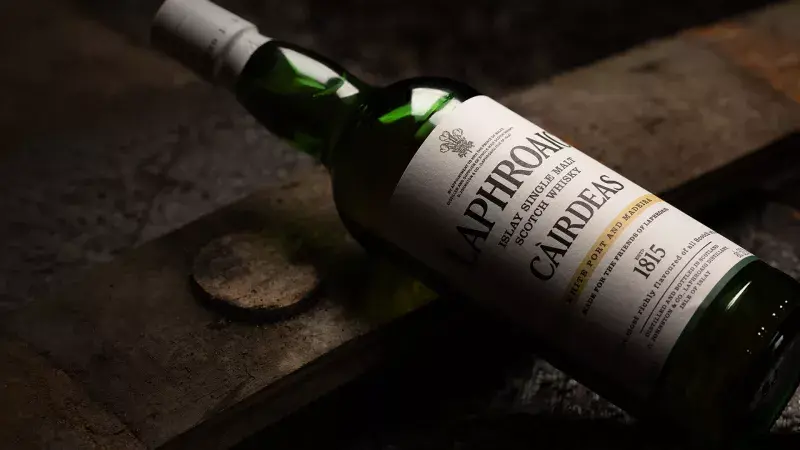While perusing my local liquor store over Labor Day weekend, I found something I simply couldn't resist. Art of the Spirits is a small distillery out of Colorado Springs with a few interesting selling points. Most obviously, the artwork - each bottle has a label based on an oil painting by Danial James or David Uhl, two Colorado artists made famous by their work for Harley Davidson motorcycles. I'm a big believer that a handcrafted whiskey is a work of art in its own right so I love the pairing here. Less obvious is that this distiller has specifically targeted the barrel pick market. Each of the five whiskies shown here is a cask strength single barrel selected by Goody Goody. The three Bonnie-and-Clyde themed "Final Run" bottles are actually the same spirit, just finished in different ways to bring out different flavors, whereas we also have as "Easy Elegance" and "The Originals" are a bit different. All five bottles were in the $80-$100 range each at my store.
I will put my individual reviews below, but overall I am impressed by Art of the Spirits. This is a very competitive price point, and none of these are likely to become an everyday favorite. Keeping in mind that these are cask strength limited editions I always felt like I was getting my money's worth though. Which is best? That's hard to say. "The Originals" was my least favorite and the one of the five I wouldn't recommend. The flavor profile was certainly unique but not something that really clicked with me. I can also say that I preferred the Ruby Port "Final Run" over the "Tawny Port" as those are similar enough that a head-to-head comparison feels fair. Between the Ruby, the Madiera, and they surprisingly complex Rye "Easy Elegance" I find it impossible to crown a victor however. All three are excellent and which I prefer depends entirely on my mood at the moment.






To start with, my buddy and I have a holiday tradition of sharing the Whisky Exchange's holiday blend. I get the feeling we will find excuses for plenty of other bottles as well though - nothing beats a dram to warm you up on a cool fall night. Let us know how the advent calendar works out for you.